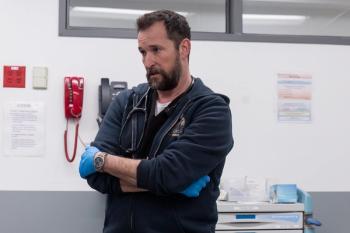
Hospitals and sustainability: CommonSpirit Health’s Shelly Schlenker says ‘it’s about your patients’
She outlines some steps for hospitals on reducing their impact on the environment, making the business case, and the growing pressure to do better.
With some prodding from the federal government, hospitals are starting to pay more attention to their environmental impact.
The healthcare industry accounts for about 8.5% of America’s greenhouse gas emissions, according to
CommonSpirit Health has a long connection with sustainability, said Shelly L. Schlenker, the system’s executive vice president and chief advocacy officer. The organization’s roots trace to its founding by Catholic nuns and sisters. “They believe taking care of Mother Earth is as important as caring for patients,” Schlenker said.
Schlenker talked with other healthcare leaders about
She also spoke with Chief Healthcare Executive after the panel to discuss how hospitals can do their part in addressing climate change. (The story continues below the video.)
For those hospitals just beginning efforts on sustainability, Schlenker said, “You start by figuring out the why for your organization.”
“Since all healthcare systems in the U.S. account for about 8% to 9% of the total greenhouse gas emissions, that’s part of the why. But it’s also about your patients,” Schlenker said. “We started with the framework that climate action is inextricably tied to health equity, because the people who are most impacted are the poor, and the vulnerable and people of color, and then it just came naturally out of our desire to advance healthcare overall.”
Those looking to convince their hospitals to engage in efforts to reduce their environmental impact are going to have to make the business case to their hospital leadership and boards.
Schlenker noted that CommonSpirit began purchasing LED bulbs, which are more expensive than ordinary lightbulbs. But they use much less energy and the health system ended up saving millions of dollars in energy costs, she said.
Regardless of the environmental initiative, Schlenker said, “In every instance, you can make the business case.”
“The business case is really about two things,” Schlenker said. “It’s about patient outcomes, but it’s also about saving money. In the initial years, there are a bunch of things you can do that actually reduce your expenses. So you get some of those wins under your belt for reducing expenses, and then people get the energy and buy-in for some of the bigger and more challenging endeavors.”
As health systems focus on their own sustainability initiatives, they also face the thorny challenge of coaxing their suppliers and vendors to adopt more environmentally friendly practices.
Schlenker suggested working with suppliers to educate them and begin providing standards they should meet. Eventually, hospitals and health systems need to put those standards in contracts, she said.
Sustainability efforts can’t be done in a vacuum. They have to be done as part of a hospital system’s strategic plan, she said. CommonSpirit doesn’t have a separate budget to deal with climate change, she said, but all new projects must address how they are going to meet environmental standards.
CommonSpirit is striving to make progress without the use of carbon offset credits, where companies can purchase credits to finance efforts to reduce emission elsewhere. The health system is focused on reducing its own environmental impact.
“We’ve committed as an organization to not using offsets,” Schlenker said during the panel. “We don’t have that kind of money, so we’re doing the hard work.”
She also stressed the importance of engaging employees who are interested in sustainability efforts. At CommonSpirit, each hospital has a “green team.” All of the members are volunteers.
The green teams meet monthly and talk about progress on sustainability efforts. CommonSpirit allows them to meet as part of their regular schedule, she said.
Hospitals should work with their local communities and understand environmental efforts probably won’t entail one-size-fits-all solutions, Schlenker stressed. For systems owning hospitals across the country, some institutions confront the threat of flooding, while others face greater dangers from wildfires or extreme heat waves.
Even as the Biden administration is pushing hospitals to reduce their emissions and pollutants, others are placing
Even hospital boards and investors are asking hospital leaders what they are doing on sustainability. “If your CFO hasn’t spoken to you about this, they will,” Simrit Sandhu, Vizient’s executive vice president for strategic transformation and clinical supply solutions, said at the AHA panel.
During the panel, Schlenker said health leaders should act with urgency and come up with some voluntary goals before government mandates are imposed. “If we don’t do it together, the government is going to do it to us,” she said.
Speaking after the panel, Schlenker said the pressure on hospitals to do better for the environment comes from many different areas.
“Your bond-rating agencies are looking at what you’re doing in this space, or those investing in you,” she said. “It’s regulators, it’s legislators. But most importantly, it’s really been our employees and our doctors who really want to see us leaning in on it. Do no harm. We start with our 156,000 associates and we look at how we can really advance this across our platform.”





























































































